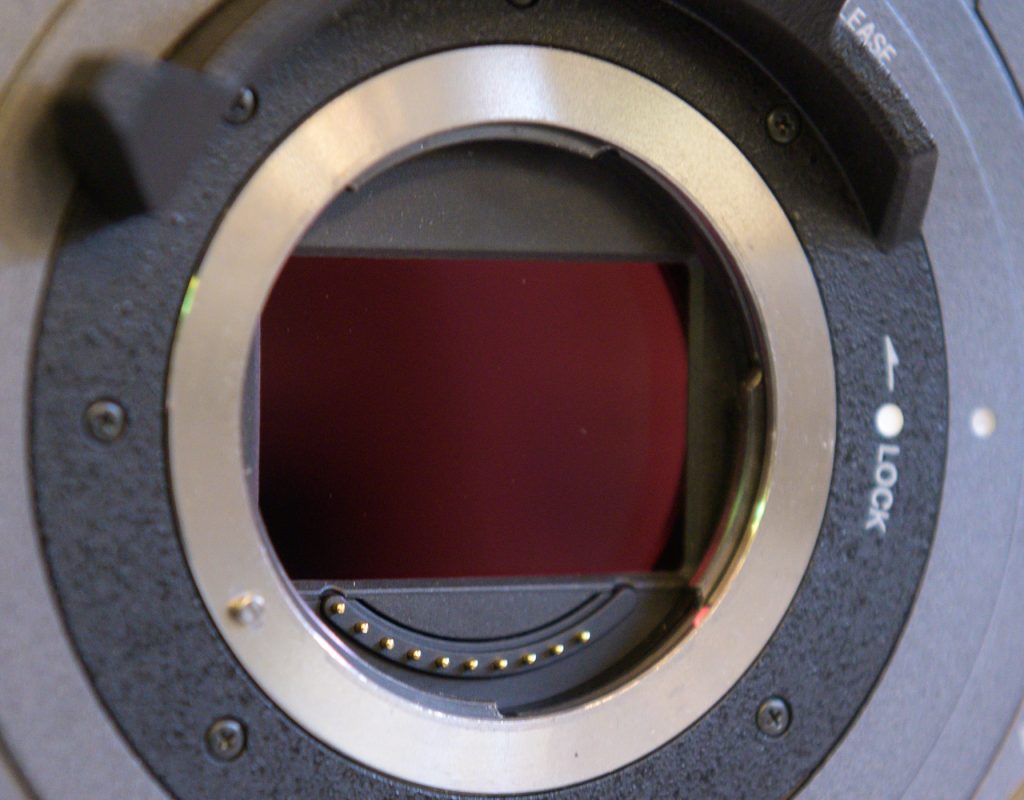Ten days. I was loaned the Sony PXW-FX9 for about ten days. It only took me one day with the Sony FX9 to realize the camera is a fantastic step forward for Sony. What did I test, and what did I shoot in my ten days with the Sony FX9? I tried to test everything I could, autofocus, variable neutral density, low-light capabilities, and Cinetone. Did I get to everything, no, but I like to think I got to enough to help you make up your mind about the Sony FX9? 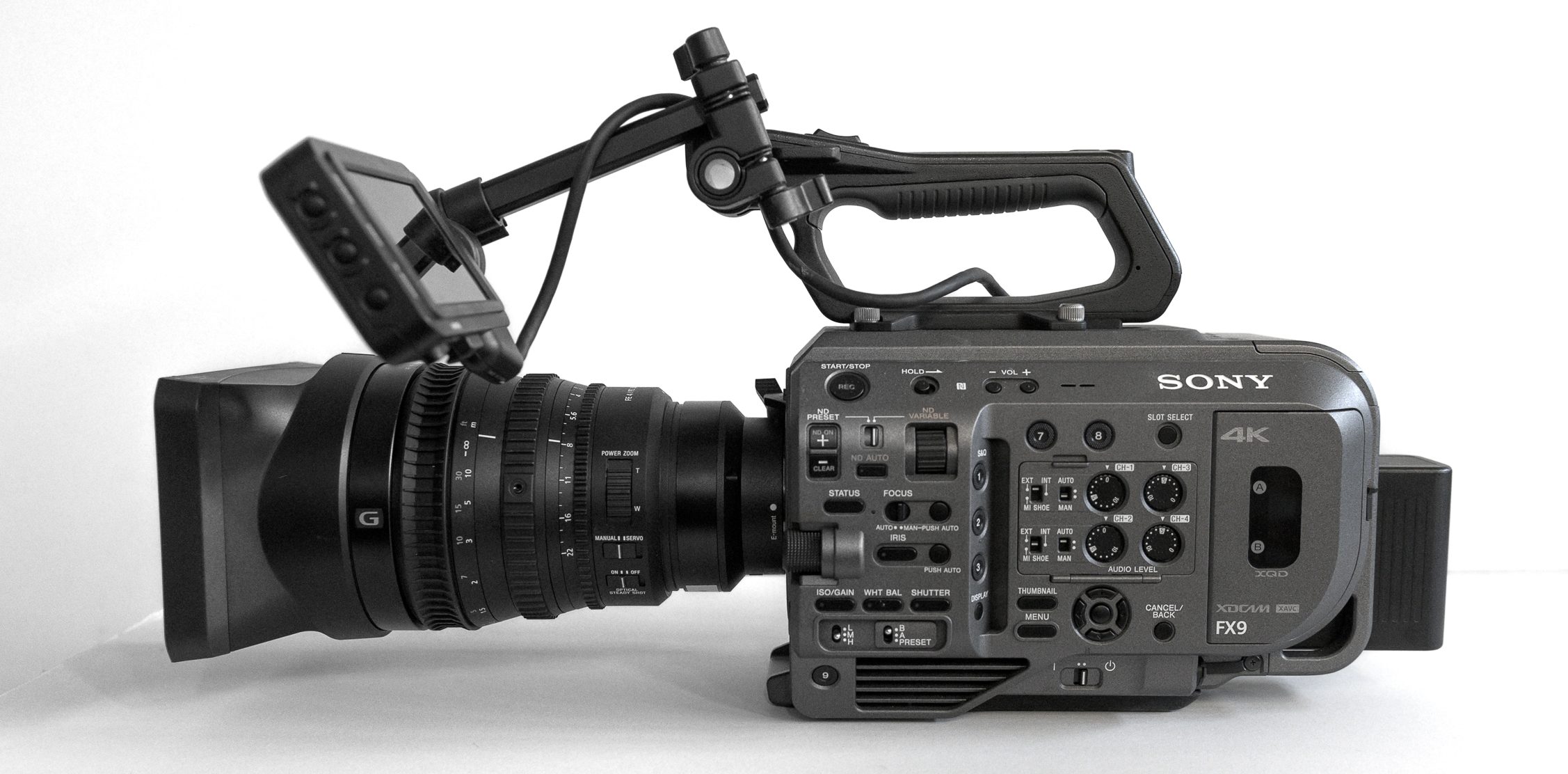
Let’s move forward to what I shot. Look, I do not attempt to say I am the best shooter. Hell, I am not even the best in my area, but I have been around long enough to feel like I have a very grounded idea of how a camera may help you reach the next level. Testing a camera is never easy. I present my video and my thoughts as straight forward as possible.
First and foremost, if you have used any of Sony’s cameras, like the Sony FS7 and FS5, then the brand new FX9 will feel very familiar in your hands. Features from both the FS7 and FS5 made their way into the design of the FX9. The best from both helped to make a better FX9. Now, I have tried my best to arrange this post with a top-down mindset. At the top, you will see my favorite features found in the FX9. Below I am sharing a local news story about New Year Eve Preps. The whole story was shot on the FX9 in 1920 x 1080, Cinetone, 800 ISO, and autofocus all selected. Look, it is a local news story with a tight shoot and deadline. This is a good example, I believe, of how the Sony FX9 can deliver with some types of documentary or news coverage.
Autofocus
How should I put this… the autofocus on the Sony FX9 is oh so VERY GOOD. So good, I wonder if Sony FX9 shooters will try their best to use Sony’s Fly-by-wire lenses over lenses they may already have on hand. With the review unit Sony sent me, they sent an older 28-135mm F4. It is, admittedly, not my favorite lens. Before the Sony FX9, the fly-by-wire build of the 28-135mm was slightly lens responsive than I usually enjoy in a lens. However, after using the Sony FX9 autofocus with the 28-135mm f/4.0, I have changed my tune. Check out this news stand up I shot with the Sony FX9. It is neither impressive on my part nor is it impressive on content, but it is a decent autofocus example.
Now, I am usually a total manual focus snob. After spending time with the Sony FX9 and 28-135mm, consider me a changed man. I am now a shooter who has finally embraced a brave new autofocus world. In all seriousness, the Sony FX9 has top-shelf autofocus capabilities. If one combines any of the lenses which will work with Sony’s FX9 autofocus, you will have a very pleasing experience with the full-frame camera. Situations I think cinematographers, especially on lower budget projects, may opt for the FX9 autofocus is when the camera is on a Steadicam and tracking a subject. Seriously, the camera did a better job of keeping my subjects in focus than I did pulling focus manually.
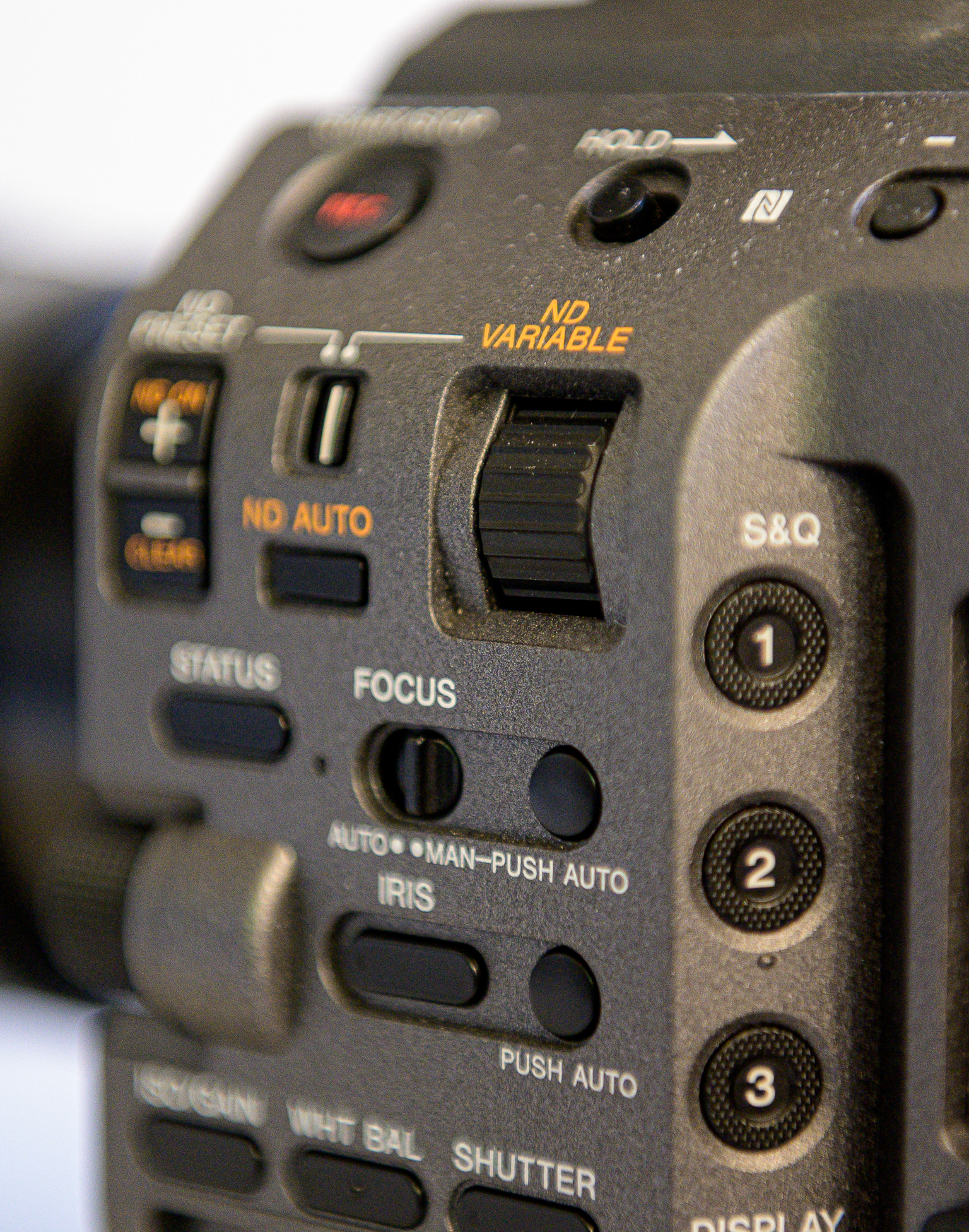 Variable ND
Variable ND
In a couple of other Sony cameras, notably the Sony FS5, one can find the Variable ND filter. The Variable ND is so good. How Sony does this mojo ND magic is over my head, but the outcome lands right where I need it. What you have is a dial on the left side of the camera, and when you have ND turned on, you can dial up to 1/128th of Neutral Density. 1/128th is enough ND to use a lens at f/4 with the camera ISO set to 800ISO on a cloudy day. If you want to shoot at a super-wide aperture like f/1.55, then you will need to use the full strength of the variable ND and likely some ND in front of the lens.
Where does this excellent neutral density come in handy? Whenever one does not want to use a matte box. In my mind, the Variable ND is also super helpful for those shooters who want to use vintage film lenses, which are full-frame. In past situations, I would use a dedicated set of round screw-on neutral density, and when bouncing from one lens to the other, I would have to change over the ND as well or have enough screw-on ND to attach to every lens I wanted to use on a shoot. Yes, you may buy multiple ND kits or your most often used densities, but with the Sony FX9 Variable ND, you can go with what the camera gives you.
Low-Light
The dual-base ISO Sony FX9, 800 ISO, and 4000 ISO are going to handle low-light situations well. There should be very little doubt about the FX9 and its low-light capabilities. I struggle, however, to put into words how to compare the Sony FX9. The noise in high ISO was less in the FX9 than a Sony A7s II, a current king of low-light capabilities. I had to shoot some locator video for a local government story at night. The Sony FX9 delivered in HD at the topmost ISO without distracting artifacts or gross noise. Be assured; the FX9 is a competent camera in low-light. In many ways, do I dare to say… the FX9 may be the new low-light King or Queen.
Slog
Look, I did not test Slog2 or Slog3 as much as I should have checked. Not testing Slog2 or Slog3 was a mistake on my part, but I think, as I would, a little forgiveness is in order. Why, do you ask? I did not look at the Sony FX9’s Slog2 or Slog3 because Cinetone is new and incredibly impressive, seriously.
Cinetone

The Sony FX9 is the first camera to show off Sony’s new color gamma, Cinetone. I loved it. I nearly spent 100% of my shooting time with the FX9 set to cinetone. In the past, some shooters have complained about Sony’s SLog2 and SLog 3 settings and how difficult they may find color grading the flat footage. It can be hard to get just right if you are new to color grading or shooting with log footage.
Plus, many of us, myself included, are hired to shoot and immediately hand off footage to broadcast network producers once the shoot has ended. Handing someone Slog3 can turn out kind of sour for a shooter. For me, a painful lesson learned the hard way. A network editor for a magazine show may have lit up my phone, demanding to know why the footage I delivered was flat. Well, that never happened again. I either took the time to color my footage before handing off, or I shot with a baked-in LUT or the last option, and my least favorite was to shoot rec709.
I feel like Cinetone just kind of solves some of this problem for many of us. The color is pleasing without becoming too reddish in the shadows, an older sony color characteristic, or too garish. I felt like it looked like what straight of the camera footage should look like right out of the camera. To put another way, close to what you want to be delivered but with enough wriggle room to match or get creative with it in post.
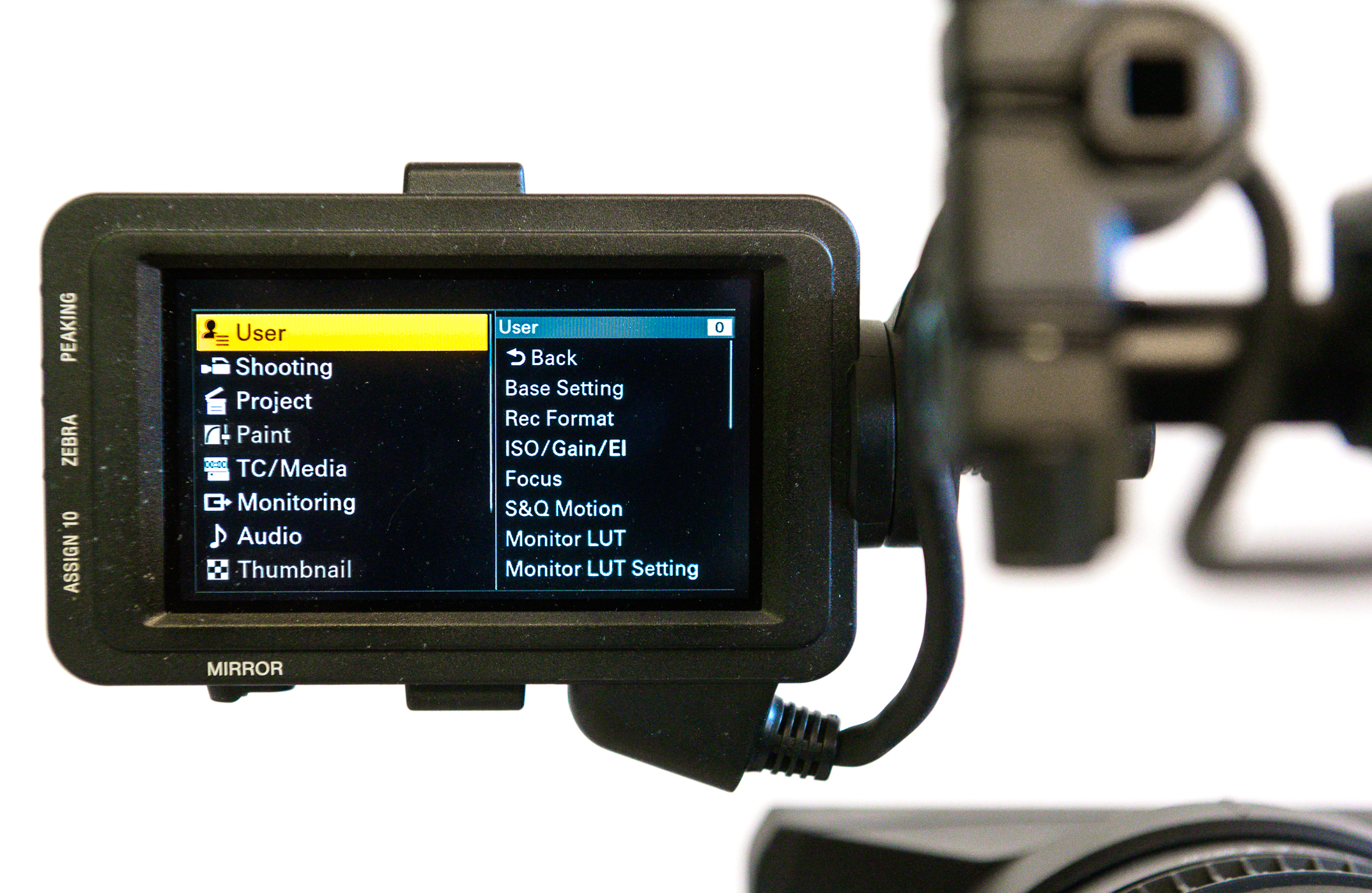 The Menu
The Menu
This is still a Sony menu in that it is still slightly frustrating to navigate, but the menu has gotten better on the Sony FX9. There are a ton of assignable buttons on the side of the camera to keep you from menu diving during your shoot. If one sets the assignable buttons to your most common menu items, then you should not need to dig too deep in the menu and thus to keep you from shooting more.
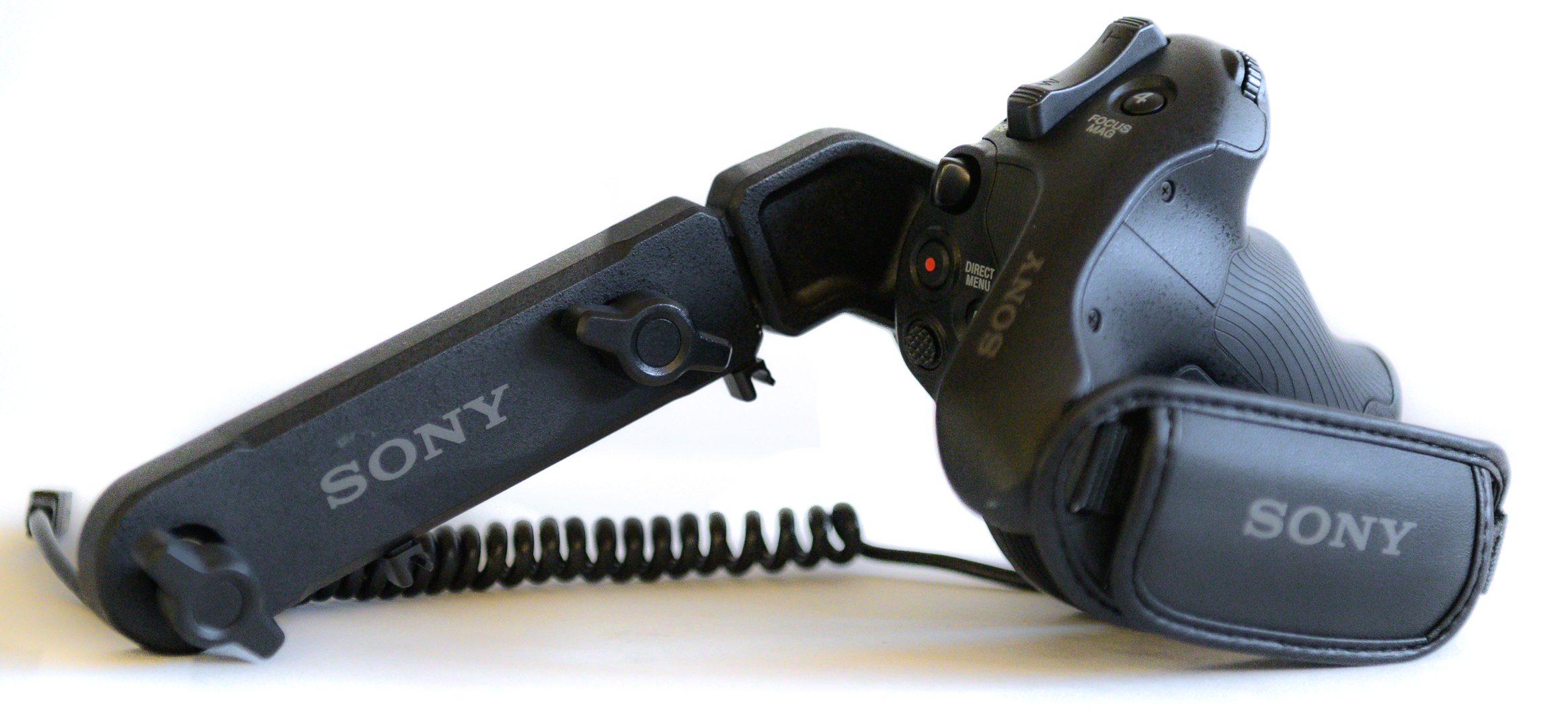 FX9 Handgrip
FX9 Handgrip
The handgrip that comes with Sony FX9 is very similar to the version from the Sony FS7; however, these handgrips are not interchangeable. The Sony FX9 version uses an entirely different connector for the cord to the camera. If I were to change something about the Sony FX9, it would be the extension arm for the handgrip. The actual handgrip rightly hits the sweet spot between usability and features. I believe the FX9 extension arm extends slightly more than the FS7 version. Between the camera body design and the placement of the arm is where my dissatisfaction develops.
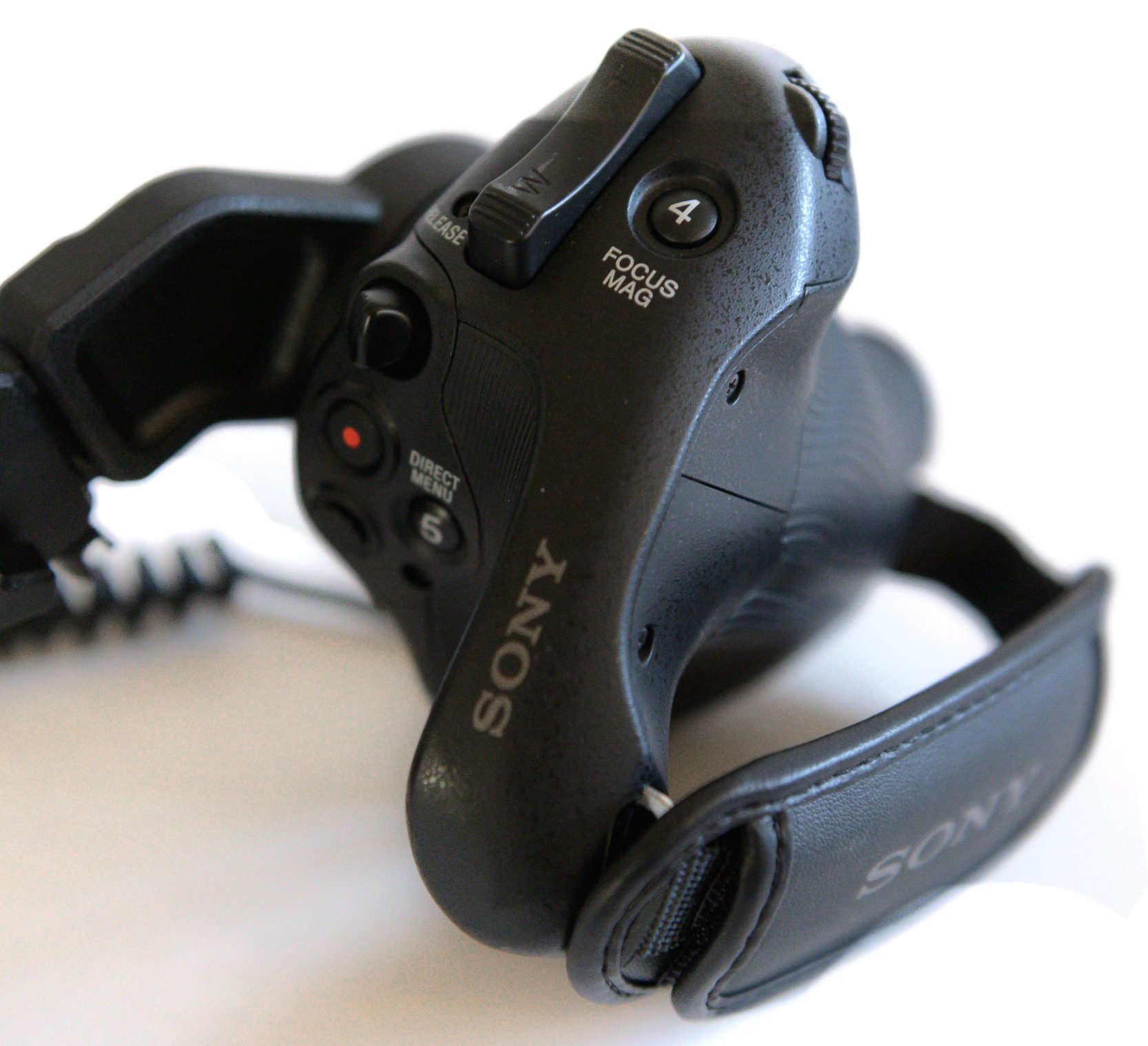 One cannot stow the camera without turning the handgrip and extension arm backward or removing it. Is this a big deal? Not really. But, I like cameras to be comfortable and quick. All of the features in the world cannot help you capture the shot if you are too busy trying to get the camera ready quickly. Maybe I am making a mountain out of an anthill, but the arm slows me down when I have to pull the camera out of a case and start shooting immediately. I do not want to unscrew a knob to place the handgrip in a comfortable position and then try to tighten the knob down again. This process usually means I look a little bit like a fool who cannot get his camera ready quickly. Essentially, it means some are going to buy a better extension arm with a quick-release button instead of a knob.
One cannot stow the camera without turning the handgrip and extension arm backward or removing it. Is this a big deal? Not really. But, I like cameras to be comfortable and quick. All of the features in the world cannot help you capture the shot if you are too busy trying to get the camera ready quickly. Maybe I am making a mountain out of an anthill, but the arm slows me down when I have to pull the camera out of a case and start shooting immediately. I do not want to unscrew a knob to place the handgrip in a comfortable position and then try to tighten the knob down again. This process usually means I look a little bit like a fool who cannot get his camera ready quickly. Essentially, it means some are going to buy a better extension arm with a quick-release button instead of a knob.
Loupe
Again, the design of the Loupe, or LCD monitor, seems to be very similar in the Sony FX9 as it is with the FS7. Alas, this design is not my favorite. It’s not bad, but I similarly see the loupe as I see Sony FX9 the extension arm. As in, I wish there was a more thought out update for smoother operation. If I were to own a Sony FX9, I think I may be open purchasing a dedicated EVF for the Sony FX9 or use a larger on-camera Monitor.
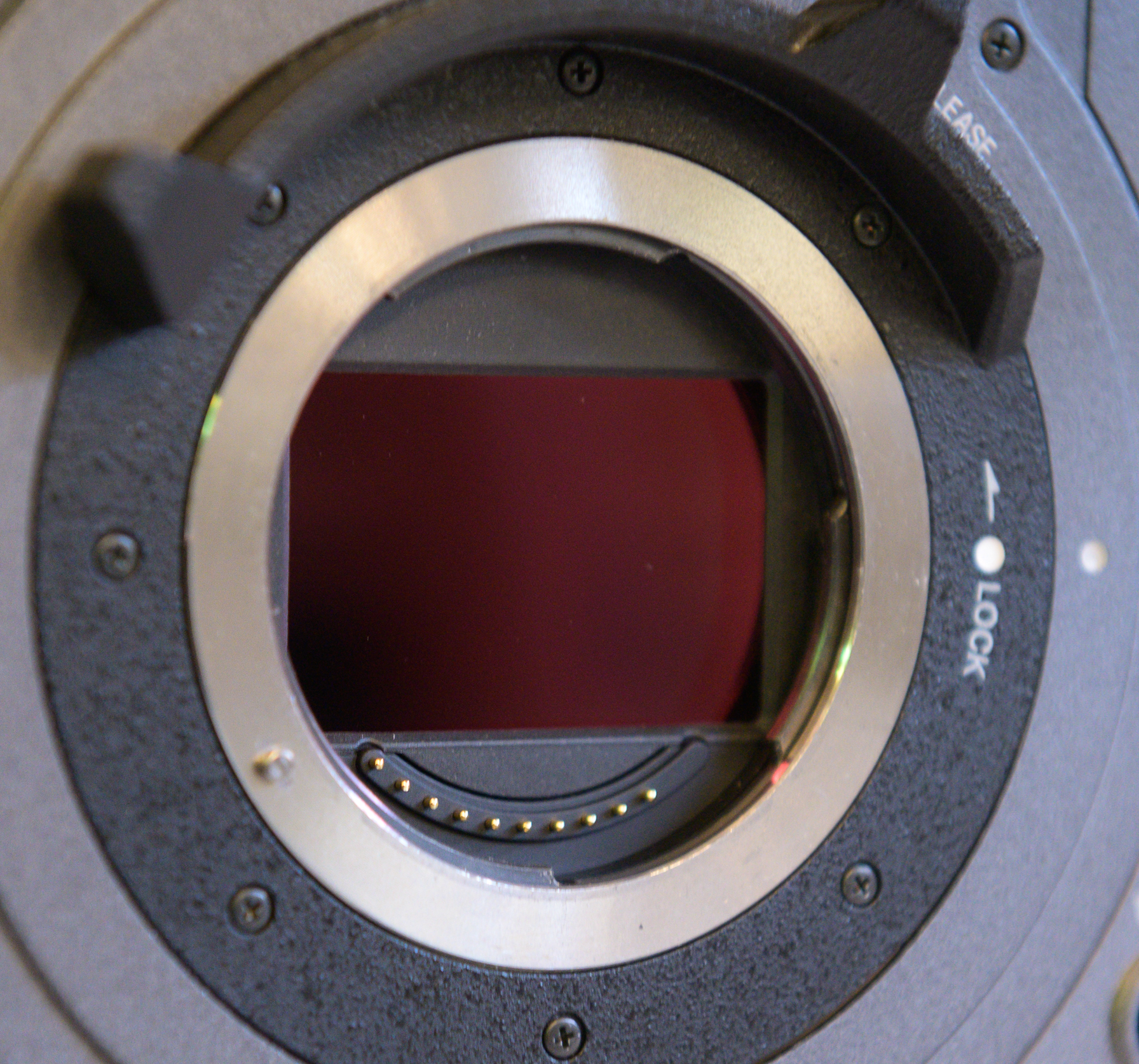
4K? 6K? What Can The FX9 Record?
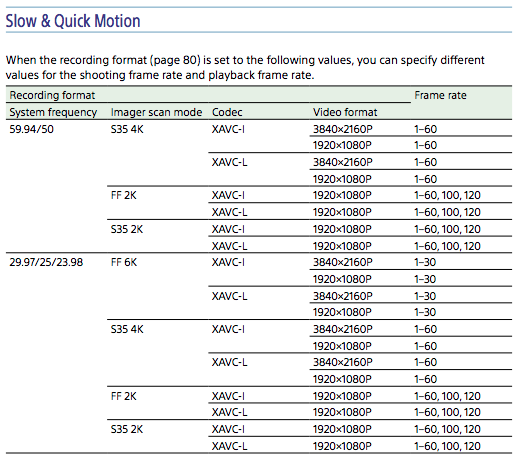 The Sony FX9 is marketed as a 6K camera, but it only records 4K. Here are the details to stop the confusion: The Sony FX9 has a 6K sensor to over-sample into a recorded 4K image. Or, 6K ⇒ 4K. With a future firmware update, the FX9 will record 4K DCI 4096×2160. At the time of this review, the FX9 only records UHD 3840 x 2160 and 1920 x 1080 HD. I want to see more options instead of the two, UHD and HD. A 2K option may be helpful, or a Super 16mm scan of the sensor for HD recording. In my opinion, we should have more than two resolution options when buying an $11,000 camera. Will 6K recording ever come to the Sony FX9? I highly doubt it since Sony Venice has an expensive license to allow the camera to record 6K.
The Sony FX9 is marketed as a 6K camera, but it only records 4K. Here are the details to stop the confusion: The Sony FX9 has a 6K sensor to over-sample into a recorded 4K image. Or, 6K ⇒ 4K. With a future firmware update, the FX9 will record 4K DCI 4096×2160. At the time of this review, the FX9 only records UHD 3840 x 2160 and 1920 x 1080 HD. I want to see more options instead of the two, UHD and HD. A 2K option may be helpful, or a Super 16mm scan of the sensor for HD recording. In my opinion, we should have more than two resolution options when buying an $11,000 camera. Will 6K recording ever come to the Sony FX9? I highly doubt it since Sony Venice has an expensive license to allow the camera to record 6K.
High Frame Rate Options
In standard speed recordings, you can shoot full-frame in UHD or HD. If you want to shoot High Frame Rates in full-frame… well, I have bad news for you. The Sony FX9 only shoots full-frame high frame rates in HD or Super 35mm UHD and not in Full Frame. Here is a look at the FX9 manual to see for yourself. Yea, bummer. I sure hope Sony will add a full-frame high frame rate recording in a future firmware update. At least, I sure hope Sony adds the option sometime soon.
Locking E-Mount
The Sony E-Mount has, at times, felt a little light on strength and durableness. Now, I’ve never had an E-Mount break or get damaged in any way, but Sony has decided to beef up the E-Mount in the Sony FX9 with the introduction of the Locking E-Mount. This update to the E-Mount feels way stronger than the original version. I shot a little video to show the locking E-Mount is easy to use. I mean, it’s a lens mount, and nothing should be difficult with using a lens mount, right. If you have not used a PL Mount, remember to use two hands when removing a lens from the Sony FX9. There is no reason to drop a lens. I write this because once one “unlocks” the E-Mount, the lens is free from the camera body, and it can be a little surprising the first time using the locking E-mount.
E-Mount Adaptability
You can go with an adapter and lens because the Sony E-mount and its super short flange distance allow you to use a world of lenses. Vintage lenses? I’d start buying up what you like. Why? Because you now have a massive amount of ND in the Sony FX9’s variable ND. Adapting and shooting wide open on these lenses like a Canon FD f/0.95 should be relatively easy to happen. Now that I do math in my head, I have come to realize the last sentence is not necessarily true when one is shooting in bright sunlight. In the case of the Canon 50mm f/0.95, you will likely still need a little ND in front of the lens, and the fullest strength of Variable ND from the Sony FX9 to get to that razor-thin depth of field f/0.95 delivers.
I happened to have a Nikon to E-Mount adapter on hand. I love the Nikon 14-24mm f/2.8, and I try to shoot on it whenever I can, but in the case of this review, I shot with the Nikon 50mm f/1.8 because “why not.” The only downside with shooting on lenses not made by Sony means you will have to roll your focus… manually… in full-frame UHD. Which, honestly, maybe harder than you think with a 4K full-frame sensor. On a computer screen, your footage may look in focus, but on a big screen, you may face the harsh reality of the full-frame razor-thin depth of field. Practice and test as often as you can here because there is very little forgiveness when shooting full-frame UHD.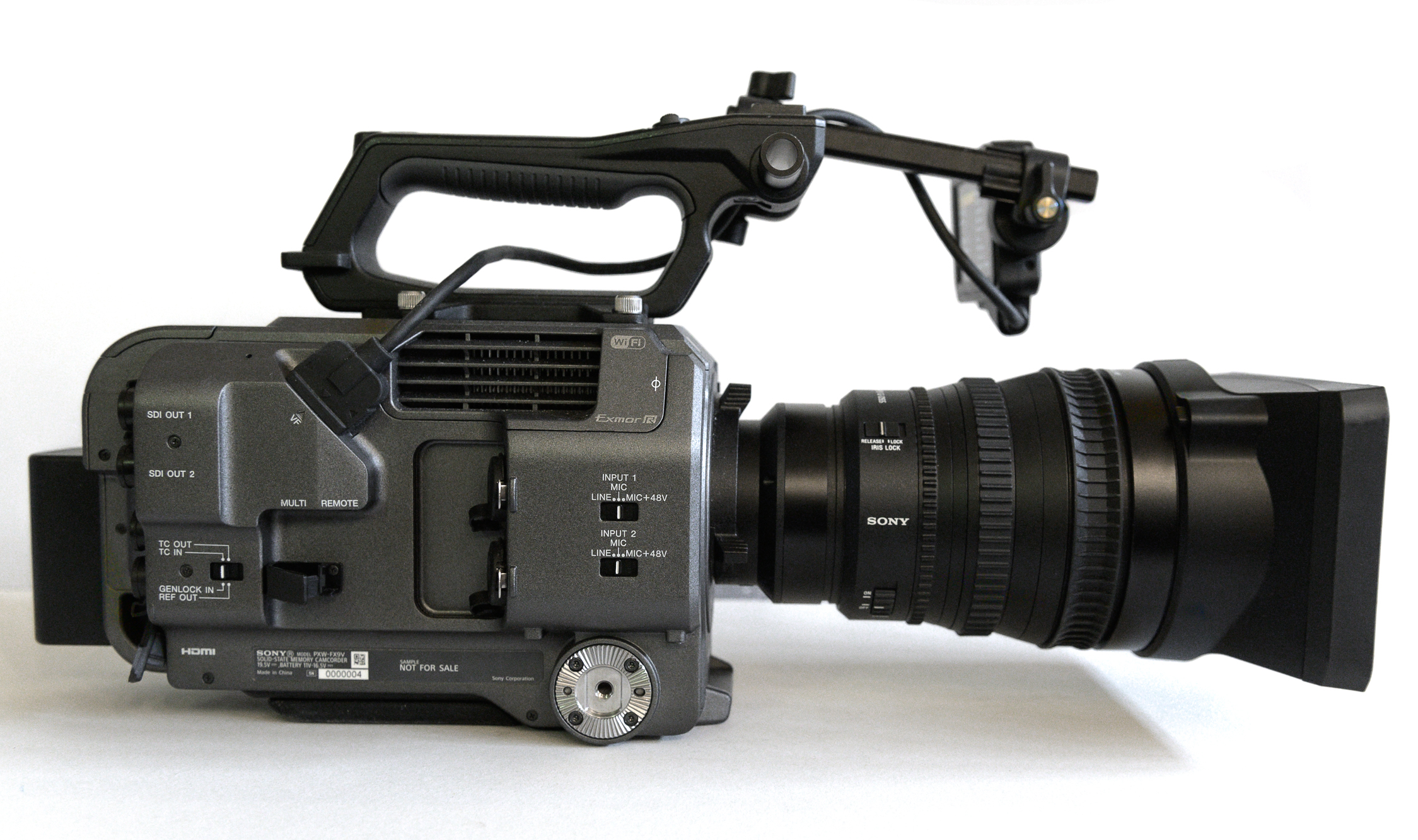
Shoulder/Hand-Held Shooting
The difference between the FS7 and FX9 is the built-in shoulder pad can move about two to three inches. It is something I guess. I am not a massive fan of shooting with the Sony FX9 on my shoulder with the basic camera accessories. The camera feels like it is neither on my shoulders or in my hands, like a medium format film camera. If I am going to shoot with a camera on my shoulder, I want it to be farther back and well balanced. If I am going to shoot hand-held, then I want the camera to feel natural in my two hands. The Sony FX9 is somewhere in between. I am picky. Going with a dedicated quick release plate and shoulder pad will likely make the FX9 more pleasurable to use on your shoulder.
Power consumption
The larger on-camera battery, I forget the technical name for it, seemed to keep the camera powered for quite most of a full day. Go with the bigger batteries for peace of mind or a small V-Mount, or Gold-Mount, rear adapter plate. One can never go badly with better batteries.
Gimbal?
The length of the Sony FX9 puts the camera within DJI Ronin 2 gimbal territory and maybe a Movi Pro, but I am less knowledgable about the Freefly Movi Pro than I am about the DJI Ronin 2. There will be people who pull a magical trick to fit a Sony FX9 and prime lens on a Ronin S, but I highly doubt the usability of the combo will be rewarding in any way.
Lasting Thoughts
Ten days with a video camera is not much time to test everything, and I know I did not get to a lot of features found in the Sony FX9. For example, I never checked the Sony Catalyst stabilizer, nor did I dive into the wireless connectivity of the Sony FX9. I do not mean to leave these features untested; it’s just I tried to focus on the big picture.
Big Picture? The Sony FX9 is a great camera capable of delivering awe-inspiring footage. There is much to like, or even love, about the camera. From the full-frame sensor, the low-light capabilities, and the incredible autofocus, this camera made my job very easy, and that is saying something profound. Making life easy is the keystone to getting better and better at our chosen craft. When the basics, like focus and cinematic color, are already present, you can now focus on telling the story better.
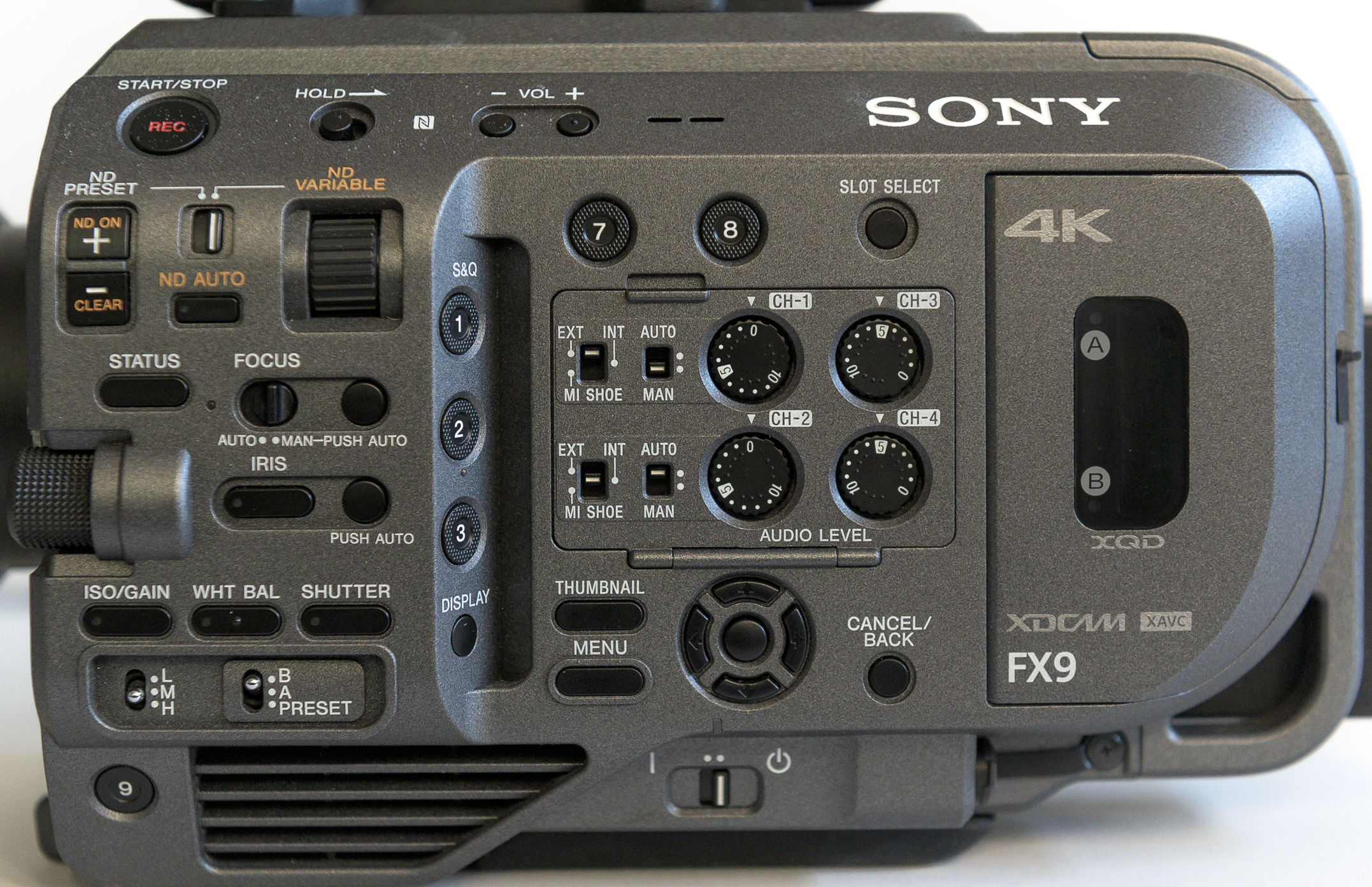
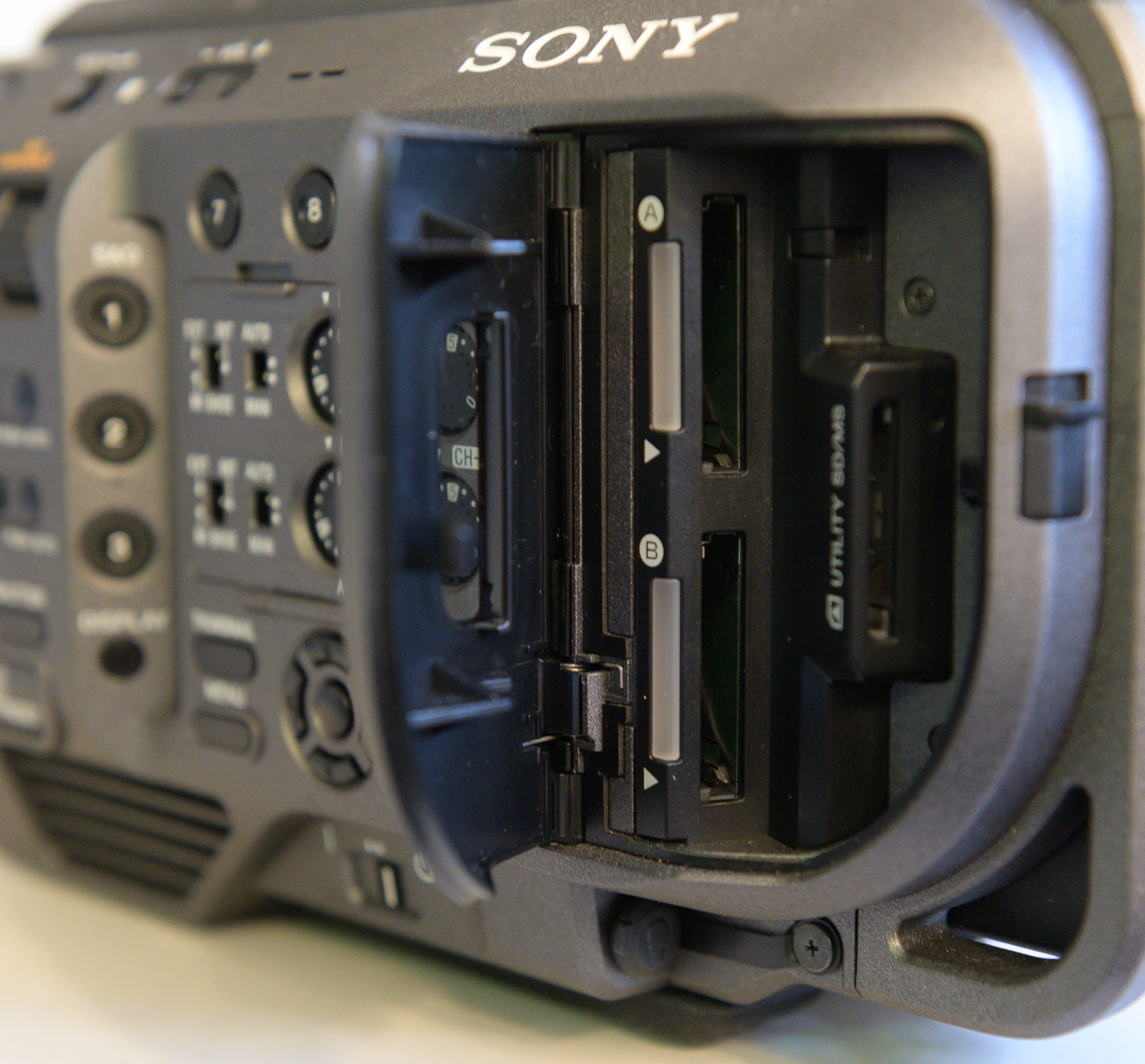

Filmtools
Filmmakers go-to destination for pre-production, production & post production equipment!
Shop Now